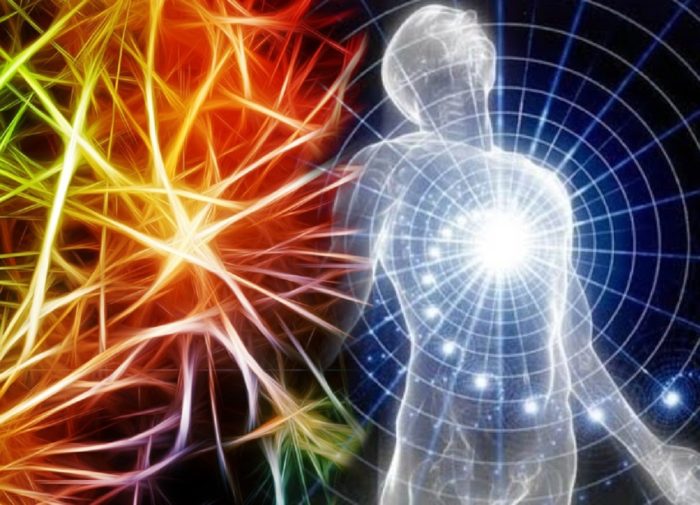
Links Between Cellular Memory And Organ Transplants
- By
- June 2, 2019
- October 4, 2021
- 22 min read
- 1
- Posted in
- Conspiracy Theory Analysis, Unsolved & Unexplained
In the 1991 sci-fi horror movie, Body Parts, several people, after receiving a variety of respective limb transplants, begin to take on the personality and see the memories of their donor.
In reality, although a lot less dramatic and with no known killing sprees, as a result, this phenomenon known as “Cellular Memory” has many reports on record. What this might ultimately prove, is that memories could be passed on through genes. If this happens through transplants, might it happen with children taking on their parents’ genes, for example? Perhaps an extreme interpretation of this might even be that these “memories” are what people have referred to more commonly over time as, the soul.

Are cases of cellular memory genuine?
Perhaps, if we accept as evidence increasingly shows and theories increasingly suggest, that the ancients had more knowledge than we may have previously given them credit for, what they referred to as “the soul” was not a reference to the divine as it would ultimately become, but a scientific reference of how the memories of human beings are passed on to their children – genetically. Essentially, they or their memories at least (or their soul?) live on!
Before we look at some examples of this happening, check out the trailer for Body Parts below.
Contents
- 1 What Is Cellular Memory And Why The Connection To Organ Transplants?
- 2 The Many Anonymous Examples Of The Modern Era
- 2.1 The “Three-Way Domino Transplant” Case
- 2.2 Gus, 47, Literally Feels Younger And “Views The World That Way!”
- 2.3 A Sudden “Deathly Fear” Of Water Following Receiving The Heart Of A Drowning Victim!
- 2.4 The Jerry-Carter Case – “I Could Feel My Son! I Could Feel His Energy!”
- 2.5 A Meeting That Was “Very Comforting” For The Donor’s Parents
- 2.6 The “Bittersweet” Meeting Of Ben And His Donor’s Wife
- 3 The Need To Spread The Message – Going Public!
- 3.1 Claire Sylvia’s Vivid Dreams
- 3.2 William Sheridan Receives “More Than A Heart!”
- 3.3 Cheryl Johnson Double Personality Change!
- 3.4 Amy Tippins Received Not Only Memories But Technical Knowhow!
- 3.5 The “Feelings of Rage” of Jamie Sherman
- 3.6 Sonny Graham And The Darker Side of Cellular Memory
- 3.7 Donor “Captures” Murderer From Beyond The Grave Through Cellular Memory
- 3.8 Donor Wrote Of His Upcoming Death And Named His Recipient!
- 4 Links To Esoterism, Ancient Wisdom, And The Occult?
- 5 The Self-Contained “Brains” Of Our Major Organs
- 6 The Heart – The Key To Cases of Transplant Induced Personality Change?
- 7 A Need To Tread Very Carefully
- 8 Two Sides Of The Spectrum Must Come Together!
- 9 Science, The Soul, Or A Meeting Of The Two?
What Is Cellular Memory And Why The Connection To Organ Transplants?
According to some, of the (approximately) 37 million cells in the average human being, each and every one of them not only contains a copy of our genetic make-up (our DNA) but also our each one of our memories, even the ones we have long-since forgotten going back to being born.
Indeed, we should remember that for all of its shouting down of such “fringe” discussions and theories, mainstream science has no solid and definitive idea of how and where our memories are stored. Nor have they any real solid idea of the approximately 90% of human DNA, referred to as “junk DNA” actually does.
As we will see, many types of organ transplants have the potential for claims of experiencing the memories of their donors. However, those who have undergone heart transplants, in particular, seem to provide the necessary circumstances for the phenomenon to occur.
For centuries mainstream and accepted science believed that only the brain would store memories of our activity. However, increasing research and findings suggests this is far from the case. Not least following such discoveries of cells in the heart almost identical to the cells that we believe store memories in the brain.
When these organs are then transplanted from one body to another, it would appear, at least in some cases, that they take those memories with them, which are then available to the recipient. Before we explore some of those check out the video below. A quick refresher which examines the notion that organs carry memories.
The Many Anonymous Examples Of The Modern Era
Perhaps it stands to reason that with the ever-onward advances in surgery, medicine, and science in general, more and more organ transplants will take place. Essentially, while such procedures are commonplace today, albeit still complicated, intricate, and not at all risk-free, they are also still in their relative infancy. As are any potential consequences of them – including claims of changes to one’s personality.
And we should stress again that of the thousands of organ transplants that take place each year, only a small percentage make claims of changes to their personality. As we will examine a little later, though, the reasons for this might not be as clear cut as they would appear.
We will look at several cases where the recipients have, for various reasons, have gone public with their claims, there are many more people who have been happy to have their claims documented and even studied for the greater good of scientific research, as they themselves remain anonymous or are given alternative names. One researcher who has perhaps gone deeper into the subject than most is Dr. Paul Pearsall, [1] who has documented some remarkable cases.
The “Three-Way Domino Transplant” Case
Perhaps one of the most bizarre cases is that of “Jim” and “Fred” who would essentially “share the same heart” during a bizarre three-way transplant that would appear to have equally bizarre effects.
Jim, without the transplant, was dying of failing lungs. However, when a young woman donor passed away, he would receive both her lungs and her heart in the ultimately successful transplant. His biological heart, however, was in relatively good working order and would be transplanted to another recipient, Fred. The case, studied by Dr. Paul Pearsall, would throw up some mind-blowing points for consideration.
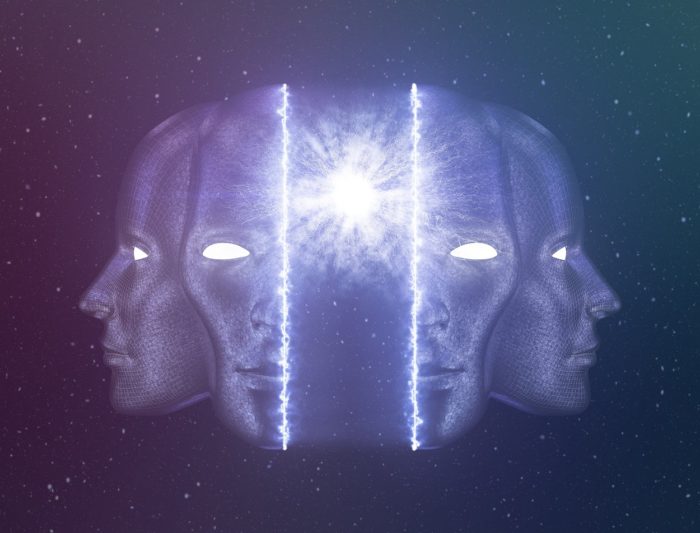
Does the human “soul” exist inside our genes?
Jim, for example, would become “sullen” and even depressed following the transplant, a complete change from his “type A aggressive” behavior he had employed all his life. He would pass away several years after the transplant. Interestingly, it would be revealed that the donor of the heart and lungs that Jim received was a young woman who had taken her own life following a bout of depression due to “lost love”. Had Jim taken on these feelings in the last years of his life?
Fred, on the other hand, the recipient of Jim’s heart, would suddenly begin to act aggressively and would even call his wife (Karen) “Sandy” on several occasions. Sandra was Jim’s wife’s name.
It is a case that certainly appears to see a change in the personalities of both of the recipients.
Gus, 47, Literally Feels Younger And “Views The World That Way!”
“Gus” was 47 years old when he received the heart of a 14-year-old girl who died as a result of a gymnastics injury. What Gus also discovered later, was the young girl also appeared to be having easting issues, perhaps forcing herself to vomit after eating.
Initially following the transplant, Gus had a “literal” new lease of life, as if he felt “younger”. And he wasn’t merely speaking of the fact he had a brand-new heart. Even the way he would “see the world” was almost from the viewpoint of a teenager. Fascinated with (to most people) bizarre and trivial issues. And perhaps most bizarre, a tendency to giggle at such issues.
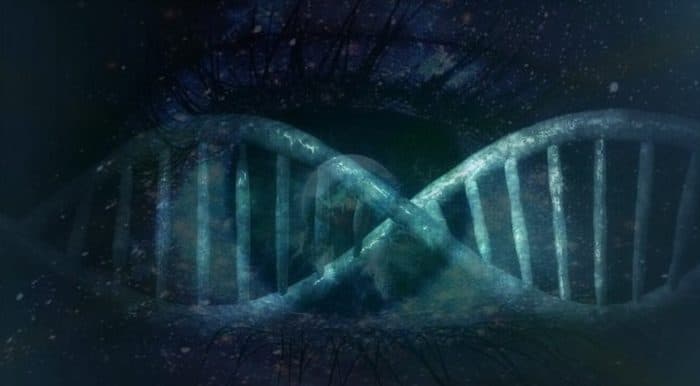
Are memories contained within our DNA?
Perhaps of more concern, though, was intense feelings of hunger, which he would satisfy, only to then have an intense feeling that “it would help if I could throw up”. Of course, after meeting the young girl’s mother and discovering the issues the young gymnast was dealing with, such feelings, to Gus, made perfect sense.
As would the “silly little giggle” that she would unleash when she was uncomfortable or embarrassed. A giggle that he too now appeared to have taken on. Perhaps, through the heart, the memories, and personality of the young teenager which now beat inside of him.
A Sudden “Deathly Fear” Of Water Following Receiving The Heart Of A Drowning Victim!
What perhaps makes the case of the 9-year-old boy who received the heart of a 3-year-old girl who drowned in the family pool is that the details offered by the recipient, completely unaware of the circumstances of the donor, matched what his parents very much knew.
The 3-year-old donor had drowned while her mother and her boyfriend were out. They had left her at home with a teenage babysitter, who instead of keeping watch on the young girl was talking on the phone when she fell into the water.
When the recipient met the donor’s mother, she would discover that she and the girl’s father were in the middle of an “ugly divorce” at the time of her death. And that she worked so many hours she didn’t see her as much as she should have.
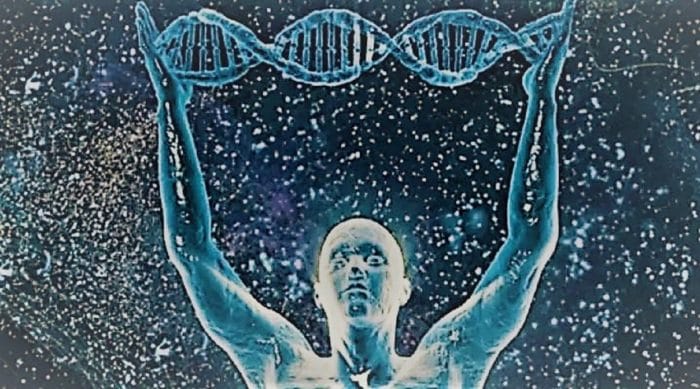
Could DNA and the “soul” be linked?
Perhaps what makes the incident truly chilling, however, are some of the things the recipient would tell his mother. For example, he would say that she wished “parents wouldn’t throw away their children”. To this, the young boy would state that he “didn’t know why she felt that”.
Furthermore, despite him having a genuine love of swimming and playing in the water previously, the young boy now had a “deathly” fear of it. So much so, that he would no longer go out in the back yard of the house as it overlooked a lake – something that had not caused any problems before the transplant.
When his mother would ask him why he had such fear of the back yard, as well as why he was constantly checking and locking the back door, he would simply state he was afraid of the water but he didn’t know why.
The Jerry-Carter Case – “I Could Feel My Son! I Could Feel His Energy!”
Of course, not all cases of organ transplant-related cellular memory feature such grim undertones. And while it is correct to say that nothing good can come from death, to some, the ability to see or feel their loved one “living” in the body of another provides some comfort.
For example, the tragic case of a 16-month-old baby boy, Jerry, who drowned in a bathtub, would see his parents take some comfort when she met the young boy, Carter, who received his heart. She would recall to Pearsall for his report:
When Carter first saw me, he ran to me and pushed his nose against me….it was just exactly what we did with Jerry…when he hugged me, I could feel my son…not just symbolically. He was there. I could feel his energy!
What perhaps makes this case even more intriguing is that the donor’s mother is a medical doctor who is “trained to be a keen observer” as well as being a “natural born skeptic”.
Carter’s mother would further state that he never simply goes to people he doesn’t know. In fact, she would describe him as very shy normally.
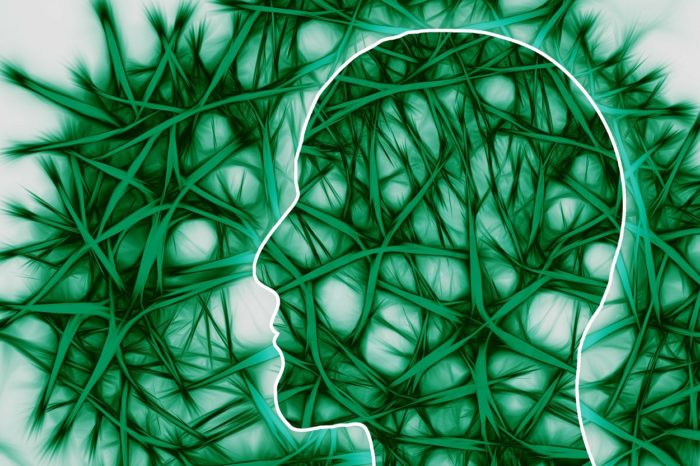
There is still much to learn about the make-up of humans
Furthermore, upon speaking with Jerry’s parents, it was discovered that the young toddler had suffered from cerebral palsy. They immediately stated how they had noticed, since the transplant, how Carter suddenly suffered from occasional stiffness and shaking on his left-hand side. Carter’s mother would state of her son’s sudden condition:
…The doctors say it’s probably something to do with his medical condition, but I really think there’s more to it than that!
Perhaps strangest of all, however, was how when Carter saw Jerry’s father for the first time, having not met him before, he immediately went to him, hugged him and said, “Daddy!”
A Meeting That Was “Very Comforting” For The Donor’s Parents
A very similar case features a 3-year-old boy, Timmy, who would tragically fall to his death from an apartment window. His heart would be transplanted to a 5-year-old boy, Daryl, who the donor’s family would arrange to meet through one of the official programs.
Timmy’s mother would recall that as soon as she saw Daryl she knew it was the boy who had Timmy’s heart. She would state that the way he smiled at her was “exactly like Timmy”. They would go on to state that the meeting brought them great comfort. As did the fact that Daryl, with no prompting, had named his donor, Timmy. His mother would state:
We knew that Timmy’s spirit was alive!
Daryl would also reveal several other accurate details about his donor. Aside from stating that he “got hurt real bad” after falling, he also claimed he was a big fan of Power Rangers (he was).
Not only was the information accurate in its entirety, but even the link between the Power Rangers and Timmy’s fall was also chilling to hear. On the day of his death, the young boy was attempting to reach for his Power Rangers toy when he fell.
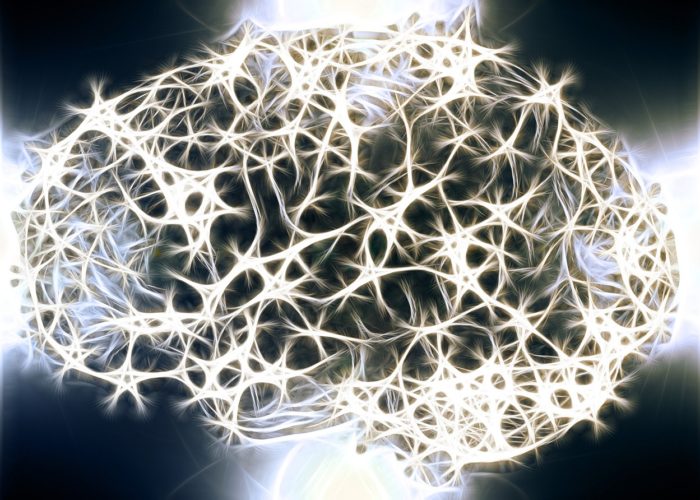
We still know very little of how the brain works
For Daryl’s parents, the revelations were also a little overwhelming. They would claim to have had no knowledge of the circumstances of Timmy’s death, nor even his name or age. What makes the naming even more bizarre is officially he is called Thomas, but immediately his family called him Timmy.
Incidentally, despite having a liking for Power Ranger before the transplant, Daryl would not even “touch his Power Rangers” suddenly following the procedure.
The “Bittersweet” Meeting Of Ben And His Donor’s Wife
A similar incident, but one with an uncomfortable undertone, is that of Carl, a 34-year-old police officer who was shot and killed during the attempted arrest of a drug dealer, and Ben, the person who would receive his heart.
When Carl’s wife would meet Ben, she would claim that she could almost see her husband in his eyes. Whether this is a placebo-type response of the donor’s wife’s mind – a way of it finding comfort in the situation – is perhaps open to debate. However, it was an “off-handed” comment that Ben would make that would bring many mixed feelings to the surface.
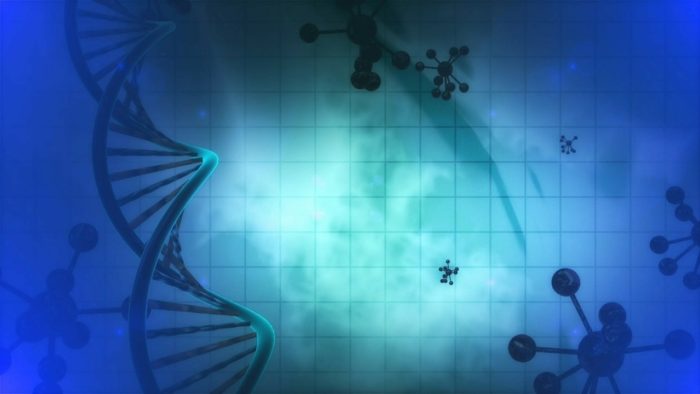
Human DNA
He would state that the only “side-effects” of the transplant from his point of view was of having dreams of intense flashes of light in his face making his face “get real hot”. He also claims, that just prior to the flash of light, he can see a person who looks very much “like Jesus”.
Now this aspect is particularly intriguing. Ben was shot at point-blank range in the face. It stands to reason that one of the last things he would have seen would be a “flash of light”. One that burns, to boot.
Even more interesting is the description of the person who shot him. Although the suspect was never caught, descriptions of the suspect were of a male with “long hair, deep eyes, a beard” and a look that many commented looked similar to typical depictions of Jesus.
Incidentally, although he didn’t divulge the Jesus aspect of the dreams, he would tell doctors of the flashes. They would claim they were likely “a side-affect of the medication” following the transplant.
The Need To Spread The Message – Going Public!
There are other cases, however, partly to raise awareness of such understudied cases and partly in order to track down the respective donor’s family, where people are happy to give their real names.
Claire Sylvia’s Vivid Dreams
Claire Sylvia, for example, would have cravings for foods she had previously had no liking for following her heart and lung transplant in 1988. There was considerable media attention paid to Sylvia’s case before she revealed any strange side-effects. She would be the first person in the New England area of the United States to undergo such an operation.
So much so, that as she came round from the surgery in intensive care, a writer was there to record her first thoughts. When asked how she felt about “the miracle” operation, she replied:
I’m dying for a beer right now! [2]
That might not have been a strange, if tongue-in-cheek reply if it was not for the fact that Sylvia didn’t drink alcohol.
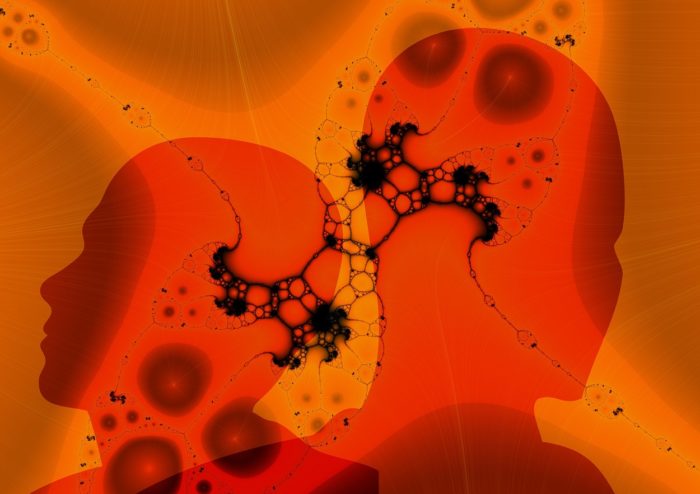
Can memories be passed from one person to another?
She would notice strange cravings for fast foods, particular chicken nuggets, as well as chocolate bars. All of which she had no liking whatsoever for. However, it was the strange and vivid dreams that caused Sylvia the most concern.
She would see a young man in these dreams, and the words, “Tim L” would always be in her mind when she awoke from them. Claire would search through the local obituaries in an effort to track down who her donor may have been. She eventually came across the obituary of Timothy Lamirande.
Lamirande had died in a motorbike accident while on his way home from a McDonald’s restaurant. In an even further twist, doctors had found food in the pockets of his clothing as they attempted to revive him. The food in question? Chicken nuggets!
William Sheridan Receives “More Than A Heart!”
Another heart transplant recipient, 63-year-old William Sheridan, wouldn’t just notice a change in his food preferences, but in his ability as an artist. Prior to the life-saving operation, he would describe his art skills as being at “nursery level”. However, upon waking from his heart transplant he not only had a sudden urge to draw, but he was extremely good at it.
And the improvement was not simply a modest one. He was drawing professional-like artwork of complicated and beautifully stunning landscapes.
Upon discovering that his donor was a “keen artist” it was obvious to Sheridan where his sudden skills had come from. He would ultimately meet the mother of the young man who had donated the heart upon his death. In a rather touching moment, he would hand a picture, he had drawn himself, of a hand holding a heart with the following inscription [3] :
You gave me more than a heart. Thank you!
He would go on to state that he wished to give up his anonymity so as to raise awareness for organ donation.
Cheryl Johnson Double Personality Change!
Between 2001 and 2008, Cheryl Johnson from Preston in the United Kingdom would undergo two kidney transplants. And with them, she would seemingly undergo two completely different personality changes. [4]
Following her first transplant in 2001, which would ultimately prove unsuccessful leading to the need of a second transplant, she would suddenly become extremely short-tempered. This was, her family would corroborate, completely unlike her usual mild-mannered temperament.
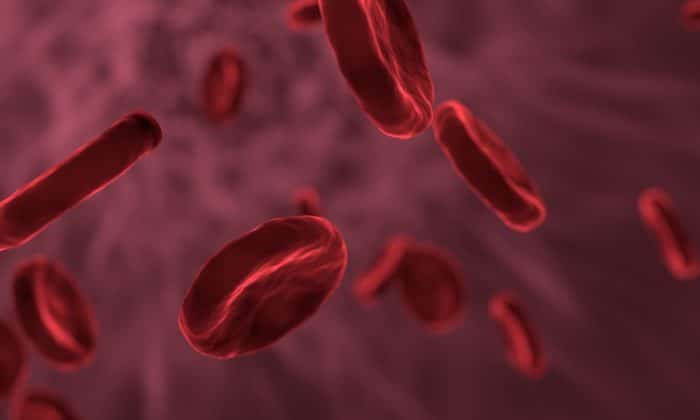
Might memories be carried in the blood?
The second kidney transplant in 2008 was not only successful, but it also brought with it another change of personality. Her previous easy-going self would return. But also came a desire to read “classic literature” – something she had never had any interest in previously.
What is perhaps interesting about Cheryl Johnson’s case is the removal of the first transplanted kidney would result in the sudden reverting back to her previous temperament. This not only suggests that the transplanted kidney was the source of the personality change but suggests that potentially, it was overriding her own personality.
Amy Tippins Received Not Only Memories But Technical Knowhow!
Undoubtedly one of the most fascinating cases of cellular memory, as well as one of the most documented and explored, is that of Amy Tippins from Atlanta, Georgia. [5] At the age of only 17 years old, Tippins would receive a brand-new liver and a new lease of life. She would also seemingly receive many interests and even personality traits of her donor.
For example, while largely displaying the normal indifference of any teenager prior to the transplant, she would now feel a strange and sudden sense of community, as if she had a duty to them.
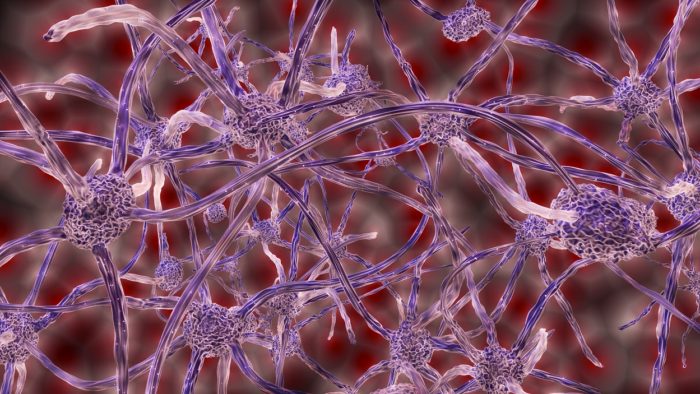
Is the human “soul” carried in the genes?
Even stranger, she had a sudden interest in Do-It-Yourself projects and all aspects of home hardware and improvement. She would often find herself, without realizing she had done so, walking into home hardware stores and examining tools and devices she didn’t realize she understood.
Furthermore, her interest was seemingly fully developed, as she had the skills to put her ideas into action. She would carry out multiple intricate home improvement projects as if she had been carrying them out all of her life.
When she finally discovered that her donor was a one-time US Marshal with an intense interest for home improvement, it all began to make sense to her. The officer in question was 47-year-old Mike James, who had suffered a ruptured aneurysm causing him to crash his car.
The “Feelings of Rage” of Jamie Sherman
In November 2001, 24-year-old, Jamie Sherman would finally undergo the heart transplant she had required since birth. The operation was successful and Jamie should now be able to live a full and “normal” life.
Far from feeling overjoyed or even relieved, despite her mind telling her to be so, she felt a deep inner rage of anger. [6] She had felt it immediately upon waking from the procedure and had no idea why. It was a very real feeling, however. She even had the urge to physically fight – something she had never felt. She also had intense cravings for Mexican food. Anything at all, as long as it was Mexican – again something she had no liking of previously.
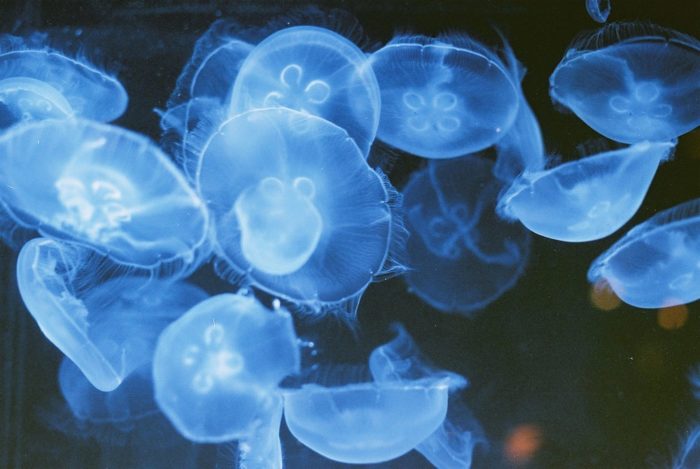
By the time she met the parents of her donor, Jamie suspected the reason for the strange cravings and overriding feeling of anger. Her donor, Scott Philips, was only twenty-nine when he died. The circumstances around his death explained a lot to Jamie. He had become caught in a fight at a sports bar one evening. A blow to the head went on to cause major brain trauma from which he would not recover.
Jamie suspected it was these last conscious feelings of Scott’s – feelings of anger and rage – that she was experiencing now. As if they had “become locked” within his body – including his heart – and so continuing in her body when the transplant happened.
Furthermore, Scott was a huge fan of Mexican food. In fact, his parents would even tell Jamie it was very much his favorite. By this point, she already knew!
Sonny Graham And The Darker Side of Cellular Memory
One of the darker tales of cellular memory is perhaps that of 69-year-old Sonny Graham. In 1995, Graham would undergo successful heart surgery, and for just short of a decade, there appeared no adverse effects.
Then, in 2004, perhaps in a questionable move to some, he married the wife of his donor, Cheryl Cottle. [7] Despite there being thirty years between them. By 2008, Graham would commit suicide by shooting himself very purposely in the throat. Having never been suicidal before, many of his family and long-time friends would declare total shock at his sudden drastic action.
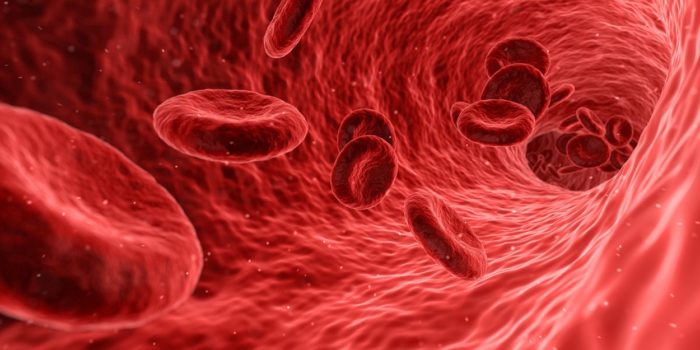
Human blood cells
Perhaps even more disturbing is the fact that Cheryl’s former husband (Graham’s donor), Tommy Cottle, had killed himself in exactly the same way – by shooting himself squarely in the throat.
Had Graham found Cheryl Cottle attractive for the same reason that Tommy once did? And had he taken on board whatever thought process that led to Tommy pulling the trigger against himself in 1995 when he became the recipient of Tommy’s heart shortly after?
While this is one of the few truly darker accounts of cellular memory, it is probable that many, particularly those with non-trivial, unsettling experiences, will not even report it to anyone. Arguably for the same reasons people keep quiet about UFO or paranormal sightings. There still remains a fear by some that people will see them as “crazy!”
Donor “Captures” Murderer From Beyond The Grave Through Cellular Memory
If we return to the files of Paul Pearsall for a moment, and some of the anonymous recipients, we will find another case of cellular memory with rather dark undertones. It would appear in his book The Heart’s Code: Tapping The Wisdom And Power Of Our Heart Energy. [8]
The recipient of a new heart was an 8-year-old girl, whose donor was a 10-year-old murder victim. Following the successful procedure, the young girl began to have intense, recurring dreams. She would claim, with no knowledge of who her donor was, that the dreams were of the murder of a girl.
Concerned for her mental wellbeing, her parents would take their daughter to a psychiatrist. After spending considerable time with her they would report to them that the young girl was telling the truth and was likely recalling something she had seen or witnessed.
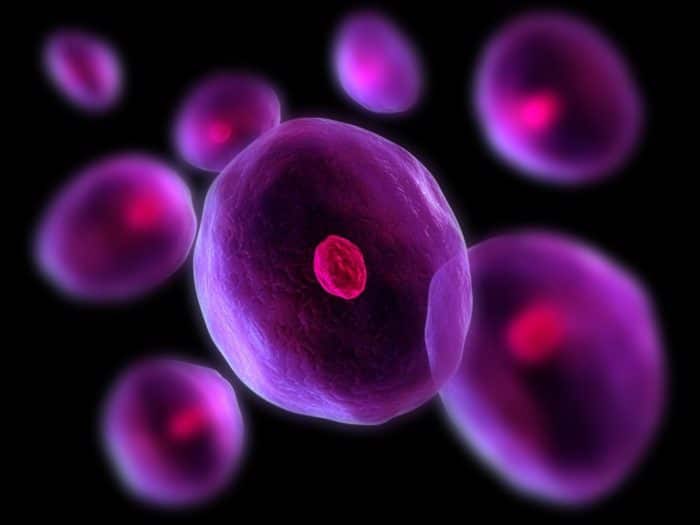
Human cells
Furthermore, upon realizing the circumstances of the donor’s death, the girl’s parents would contact the police. From her dreams, the recipient was ultimately able to provide enough clues to investigators that they were able to arrest and successfully prosecute her donor’s murderer. The victim had literally caught her murderer from beyond the grave.
These cases, if only in part, highlight a potential supernatural or paranormal aspect of cellular memory, if only on occasion. And given that many things that currently reside in such arenas would make the change to science fact upon explanation, that perhaps isn’t surprising. Indeed, there is an apparent blur between such apparently different fields of interest.
Before we move on to examine some of these potentially unrelated links a little further, we will look at another of Pearsall’s cases. One that while not necessarily dark certainly continues down the path of the strange and bizarre.
Donor Wrote Of His Upcoming Death And Named His Recipient!
Perhaps one of the most intriguing and thought-provoking examples of cellular memory involved that of an 18-year-old boy who tragically died in a car accident. What was so strange about the case, as his family would discover after the death of their son, were the apparent premonitions of his upcoming demise. And who his transplanted heart would go to.
Having decided he wished to be an organ donor at the age of only 12 years of age he seemingly grew up to be a normal, happy, healthy young man. He had a love of music (specifically the guitar) and would write poetry often.
One of these poems was of his own sudden and impending death. Another one, however, was titled ‘Danny, My Heart Is Yours’ which not only, once more, spoke of the knowledge he had of his death, but that he would literally give his heart to someone as a result.
When his parents wished to discover information about the recipient, they would discover she was a teenage girl of a similar age. Perhaps unbelievably her name was Danny. She had developed a sudden interest in the guitar following the procedure. And what’s more, she would often refer to her transplanted heart as her “lover’s heart”.
It was the recipient’s genuine belief that the donor was her lover from a past life, perhaps many past lives, who had saved her life in this manifestation of their existence.
Of course, this train of thought would require a belief in the world of the paranormal, the existence of consciousness in another form after death, as well as an acceptance of many esoteric and ancient beliefs.
Before we move on, check out the short video below.
Links To Esoterism, Ancient Wisdom, And The Occult?
While it may sound completely bizarre, although perhaps not so much in light of our last examples, there are some rather intriguing if, at times, chilling links to various writings and beliefs of the Occult and those with esoteric leanings.
Can we, for example, explain the access to such memories through organ transplantation akin to someone watching a TV show or reading words on a page – essentially accessing information but with no direct or active link. Or might this apparent connection be a two-way thing? Something along the same lines as possession.
Might, for example, the energy or “soul” of the donor remain aware of their influence on another?
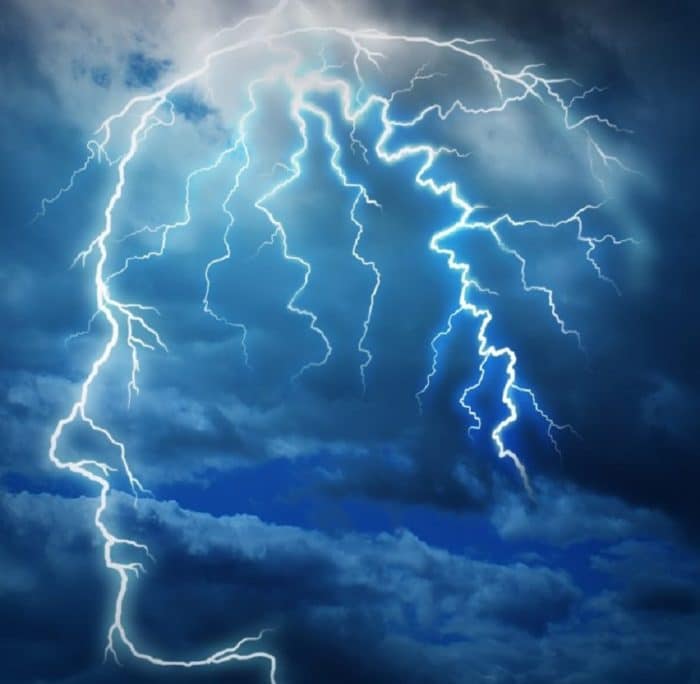
Are memories stored externally?
While these thoughts and potential connections to ancient knowledge of the human body and spirit is purely speculation, it is an interesting notion. And one that, should it be studied sufficiently, might offer further explanations on such aspects of the paranormal and the presence of consciousness after death. Indeed, it might force us to question what death, and in turn, life actually is.
Interestingly, and again bearing in mind esoteric wisdom and its place within many of the classic fiction titles of the last several centuries, is the notion that such writers were speaking of the concept that the body’s major organs stores aspects or residue of the person’s “soul” as far back as the 1800s. Might their “imagination” have been an understanding of ancient knowledge long before modern science “discovered” it.
The Self-Contained “Brains” Of Our Major Organs
Although mainstream science very much distances itself from the notion of organ recipients taking on the memories of those who once owned those organs, there is an abundance of research [9] taking place to better understand this phenomenon.
For example, as we will look at in a little more detail in a moment, when people began to make claims of what would become known as cellular memory following heart transplants, doctors and scientists began to conduct serious studies of the phenomena.
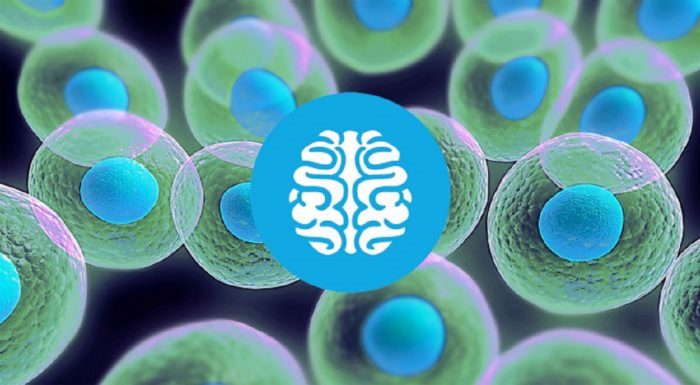
Just what is the link between memory and DNA?
It was soon discovered that the heart’s neural networks were essentially “self-contained brains” which store aspects of the person’s personality. Consequently, when this major organ is transplanted into another body, it brings with it these memories and personality traits within its own “brain” which can then cause changes in the personality of the owner.
These memories, according to recent research on the subject, most often respond to stimuli of sorts. For example, a smell, a place, or some other medium such as a song that would evoke an emotional response. It would appear, then, unlike the film Body Parts that we examined in our opening, that these transplanted memories are dormant in the recipient until something “activates” them.
What’s more, these neural networks – or “brains” – are present in other organs such as the liver or kidneys. And even in the body’s muscles.
In short, for all the knowledge we undoubtedly have thanks to the advancements of medical science – advancements which will continue without question – there is still so much about ourselves, physically and spiritually, that we simply don’t understand. With that thought in mind, we should perhaps take the claims of those who have undergone such major changes to their bodies a little more seriously than many of us perhaps do.
The Heart – The Key To Cases of Transplant Induced Personality Change?
It has largely been accepted for some time that the brain is responsible for storing our memories. And this would make perfect sense. However, as we have discovered, and as ties in with many “crazy” ancient writings, it would appear memories are present in many things that we wouldn’t even begin to suspect.
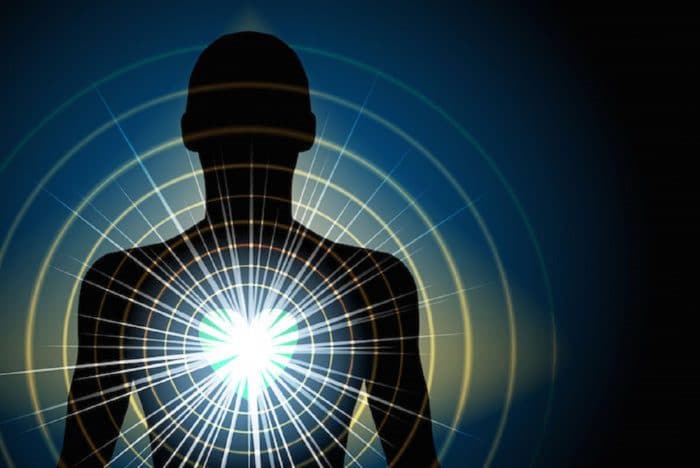
Is the heart key to understanding celluar memory?
While we will not explore the idea of memory cells stored in even non-living things (such as stone and rock, which, like us, come from the same “stardust” from the cosmos), it is worth mentioning in passing that such memories do reside in plant life, trees, and all vegetation. This, once again, ties in with esoteric beliefs and ancient wisdom. That human beings have a “vegetable” part of their own bodies (or more specifically, souls). What’s more, they point to the nervous systems and the similarities with such vegetation make-up.
In terms of cellular memory and an apparent connection to organ transplants, it began to be noticed that those who received heart transplants, albeit still a small percentage of the overall total recipients, would appear to have the strongest cases of such memories of their donor.
One of the leading researchers in this area is Dr. Paul Pearsall, who has studied over 70 such cases of heart transplantations. He would notice that while recipients of organs such as a kidney or a liver would notice slight changes to their tastes in food, art, or music, recipients of transplanted hearts would experience much more pronounced and distinct changes to their personality. And what’s more, these changes were almost always in line with the donor’s own personality.
The Notes Of Dr. Pearsall And The Revealing Research Of Dr. Bunzel
He would also note some interesting details. He would notice that those who would report such changes were most often creative personalities. Usually with a love of the arts, and emotionally and environmentally aware. Interestingly, whether it was the “luck of the draw” of the patients in his care or not, all but two of those who Pearson studied were women.
Incidentally, he would note that many of these traits were virtually the same for those who were susceptible to hypnotization. Given the connection to esoteric wisdom, this is an interesting point to highlight.
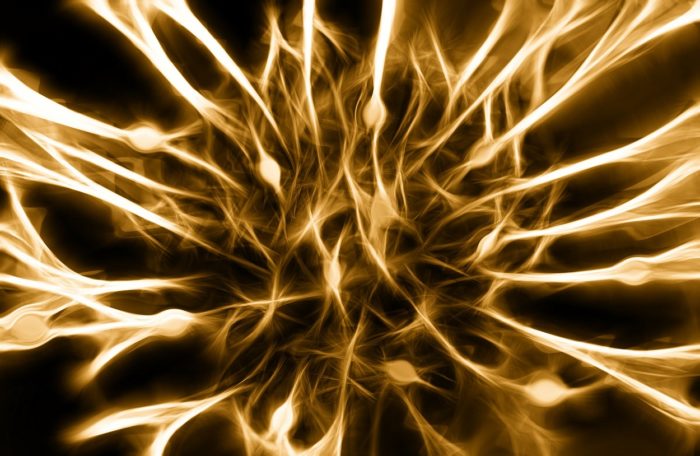
We still know very little about the genetic make-up of the human brain and body
We should also perhaps mention the work of Dr. Benjamin Bunzel from the University Hospital in Vienna. By the late-1990s, Bunzel had studied 47 separate heart transplant recipients. And his findings were intriguing, to say the least, even if on the surface they didn’t appear to be.
For example, of the 21 percent of people who claimed to have noticed a change in their personality due to the transplant, only 6 percent (three people) would claim they believed the change was directly connected their new heart. The remaining 15 percent claimed this was simply down to the obvious stress of undergoing such major surgery.
The 79 percent who claimed to have noticed no change in their personality whatsoever, however, would show the most intriguing traits. Mainly, an obvious “employing of defense mechanisms”. As well as fits of anger in response to the questions of such a personality change. In fact, Bunzel would note these reactions were often bordering on “hostile”. Furthermore, many of them would mock even the suggestion and most were eager to change the subject entirely.
A Need To Tread Very Carefully
Perhaps of more concern, particularly in light of the ever-growing research into just when the point of death might be, is that these memories only seem to appear after “actual death” of the donor. As grim, and artificial as many will claim it is, all donors remain “alive” in order to prevent damage to the organs that require transplanting. If, as we must take such claims with a pinch of salt pending much further research, these memories are not occurring instantly but after “actual” death, that would force us to question when a person is actually dead.
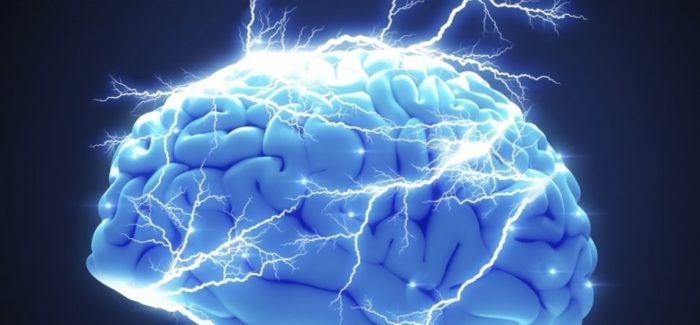
The human brain could be capable of more than we know
While we will not debate the rights and wrongs of the situation here, there are increasing arguments that would appear to question at what point a patient is “dead”. And with an apparent drive to move down from “brain dead” to “circulatory death” as a line to trigger the move from patient preservation to organ extraction for donation it is perhaps understandable why some people might be a little nervous. Particularly when there is still such a grey area as to when the point of death actually is.
This is an uncomfortable notion for many. Remember, it is not knowledge that is good or bad, but the utilization of it. Those approaching such decisions from a medical standpoint but with an arrogant disregard for anything outside of their small circle of understanding are surely not best positioned to make such decisions. If indeed, any one person, or group of people, ever would be.
With this in mind, and with the obvious need for organ donors, research should perhaps turn to the idea of “growing artificial organs” through cloning, as required and specifically for the recipient. While that might be science-fiction today, it might be something required in the future.
Two Sides Of The Spectrum Must Come Together!
Despite the encroachment of such subject matter on the mainstream, the idea of cellular memory and the connection to organ transplantation is still very much viewed as “pseudoscience” or “fringe theories”. As we have mentioned before, partly to maintain funds and partly to defend their own theories, the mainstream tends to suffer from intense myopia. Or, to put it another way, they often can’t see the woods for the trees.
In short, for all the counterarguments and “debunking” to such claims, mainstream science is on just as shaky ground as anyone else. Not that we should choose one view over the other. In fact, that is precisely where we appear to be collectively falling down.
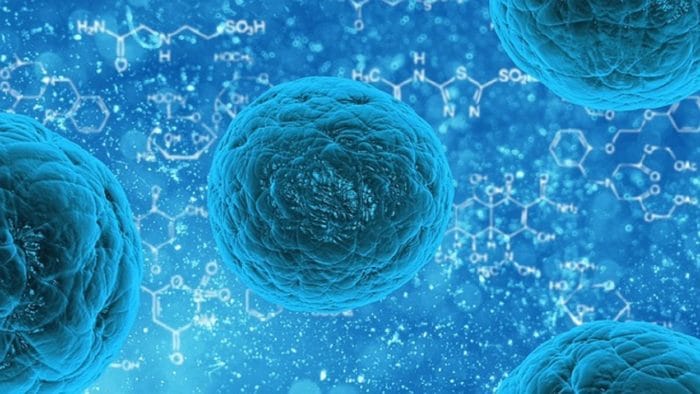
Just what might contained in the DNA we have yet to understand?
As in most other aspects of life, the need to choose a side should, in all except the most obvious and extreme of circumstances, be resisted. Instead, we need to seek a meeting in the middle of “science” and “mysticism”. Of modern technology-driven data and ancient esoteric wisdom passed down through the ages. And still very much alive today.
We need to guide each of these, at times, stubborn stances to the middle ground. So they might combine their reasoning and understanding. And in doing so, from the coming together of two largely opposite and incompatible stances, we might create a third, more powerful and knowledgeable force. One that will take humanity truly forward.
It is perhaps something that those who claim to care about their fellow man takes seriously. After all, that “third force”, should it ever be realized, is neither good nor bad. It just is. How it is used, by whom, and for what will undoubtedly make all the difference on the consequences to us all.
Science, The Soul, Or A Meeting Of The Two?
Many mainstream scientists, however, are beginning to look at cellular memory [10] with more of an open mind. What was once something purely for the unhinged scientists at the fringes, is now researched more in-depth by the mainstream. And with more funding no less.
Professor Gary Schwartz is one of the leading researchers into this theory, and his findings, along with Dr. Paul Pearsall appear more and more conclusive.
Dottie O’Connor, from Massachusetts for example, had a huge fear of heights. Until, purely coincidentally, she received the lungs of a professional mountain climber. With her recovery came a newfound tolerance of heights.
Is cellular memory something that passes to the recipient through a physical transplant such as the examples in this article? Or does the same information become passed on from the genes of parents to their offspring? Might a child be able to remember the memories of its parents through their genes that in turn make up its own genes?
Might this explain such feelings as Déjà vu or even recurring dreams? And does this “information” within all of our DNA perhaps offer a scientific explanation for something that many still debate intensely – the soul?
Check out the videos below. The first is an interview I had with Paul and Ben Eno from Behind The Paranormal, while the second talks in depth of the idea of cellular memory and organ donation.
References
| ↑1 | Organ Transplants and Cellular Memories, Paul Pearsall, Gary E. Schwartz, and Linda G. Russek, Nexus Magazine, Vol. 12 No. 3, April-May 2005 https://www.paulpearsall.com/info/press/3.html |
|---|---|
| ↑2 | For a Heart-Lung Transplant Patient, a New Life Beyond Her Wildest Dreams, Fox News, April 11th, 2008 https://www.foxnews.com/story/for-a-heart-lung-transplant-patient-a-new-life-beyond-her-wildest-dreams |
| ↑3 | The art transplant, Mail Online, March 31st, 2006 https://www.dailymail.co.uk/health/article-381589/The-art-transplant.html |
| ↑4 | My personality changed after my kidney transplant – and I started to read Jane Austen and Dostoevsky instead of celebrity trash, Jaya Narain, Mail Online, March 15th, 2008 https://www.dailymail.co.uk/health/article-533830/My-personality-changed-kidney-transplant–I-started-read-Jane-Austen-Dostoevsky-instead-celebrity-trash.html |
| ↑5 | Inherited Cell Memories, Memorise, December 22nd, 2011 https://memorise.org/brain-articles/inherited-cell-memories |
| ↑6 | Some Heart Recipients Report Strange Changes, Sam Savage, Red Orbit, March 9th, 2005 https://www.redorbit.com/news/health/134215/some_heart_recipients_report_strange_changes/ |
| ↑7 | 2 Suicide Victims Shared Same Heart, Wife, CBS News, September 1st, 2008 https://www.cbsnews.com/news/2-suicide-victims-shared-same-heart-wife/ |
| ↑8 | The Heart’s Code: Tapping the Wisdom and Power of Our Heart Energy, Paul Pearsall, ISBN 9780767 900959 |
| ↑9 | Organ Transplants Cellular Memory Proves Major Organs Have Self-Contained Brains?, Janet Grace Ortigas, Guardian Liberty Voice, June 11th, 2013 https://guardianlv.com/2013/06/organ-transplants-cellular-memory-proves-major-organs-have-self-contained-brains/ |
| ↑10 | Shocking examples of cellular memory, Mail Online, March 31st, 2006 https://www.dailymail.co.uk/health/article-381587/Shocking-examples-cellular-memory.html |
Fact Checking/Disclaimer
The stories, accounts, and discussions in this article may go against currently accepted science and common beliefs. The details included in the article are based on the reports, accounts and documentation available as provided by witnesses and publications - sources/references are published above.
We do not aim to prove nor disprove any of the theories, cases, or reports. You should read this article with an open mind and come to a conclusion yourself. Our motto always is, "you make up your own mind". Read more about how we fact-check content here.
Copyright & Republishing Policy
The entire article and the contents within are published by, wholly-owned and copyright of UFO Insight. The author does not own the rights to this content.
You may republish short quotes from this article with a reference back to the original UFO Insight article here as the source. You may not republish the article in its entirety.


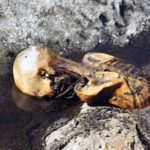
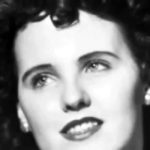
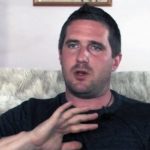
1 Comment
UFO Insight does not take responsibility for the content of the comments below. We take care of filtering profanity as much as we can. The opinions and discussion in the comments below are not the views of UFO Insight, they are the views of the individual posting the comment.
Newest comments appear first, oldest at the bottom. Post a new comment!
As the recipient, we receive something that keeps a part of us alive. In turn, the donor also receives something {albeit a physically bigger something} that keeps a part of it alive. These two parts together form one living whole. Why should only one of the parts be expressed in the final product?